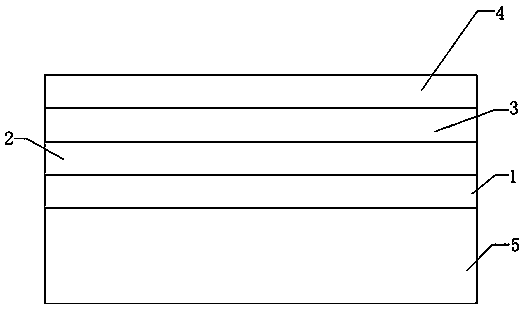A solar cell passivation anti-reflection film and a coating process thereof
A solar cell, passivation reduction technology, applied in the direction of circuits, photovoltaic power generation, electrical components, etc., can solve the problem of high interface defects in the film layer, reduce the recombination speed of minority carriers, and cannot meet the requirements of surface passivation and bulk passivation of crystalline silicon cells Requirements and other issues to achieve the effect of improving interface defects, improving light loss, and enhancing absorption
- Summary
- Abstract
- Description
- Claims
- Application Information
AI Technical Summary
Problems solved by technology
Method used
Image
Examples
Embodiment 1
[0049] Example 1: Step 1: 5 Silicon substrates are kept in a vacuum environment, the coating temperature is maintained at 450°C, silane and ammonia gas are introduced to maintain the pressure of the furnace tube at 1600mTor, the ammonia gas flow rate is 5600 sccm, and the silane flow rate is 1450 sccm. The time is 100s, and the preparation of the film layer 1 is completed.
[0050] Step 2: Keeping the temperature and pressure constant, the flow rate of ammonia gas introduced is 5600 sccm, the flow rate of silane is 1100 sccm, the coating time is 95s, and the preparation of the second film layer is completed.
[0051] Step 3: keep the temperature and pressure constant, the flow rate of ammonia gas introduced is 6300 sccm, the flow rate of silane gas is 780 sccm, the coating time is 136s, and the preparation of the third film layer is completed.
[0052] Step four:
[0053] Preparation process of the last layer of gradient film: keep the coating temperature and pressure constan...
PUM
 Login to View More
Login to View More Abstract
Description
Claims
Application Information
 Login to View More
Login to View More - R&D
- Intellectual Property
- Life Sciences
- Materials
- Tech Scout
- Unparalleled Data Quality
- Higher Quality Content
- 60% Fewer Hallucinations
Browse by: Latest US Patents, China's latest patents, Technical Efficacy Thesaurus, Application Domain, Technology Topic, Popular Technical Reports.
© 2025 PatSnap. All rights reserved.Legal|Privacy policy|Modern Slavery Act Transparency Statement|Sitemap|About US| Contact US: help@patsnap.com

